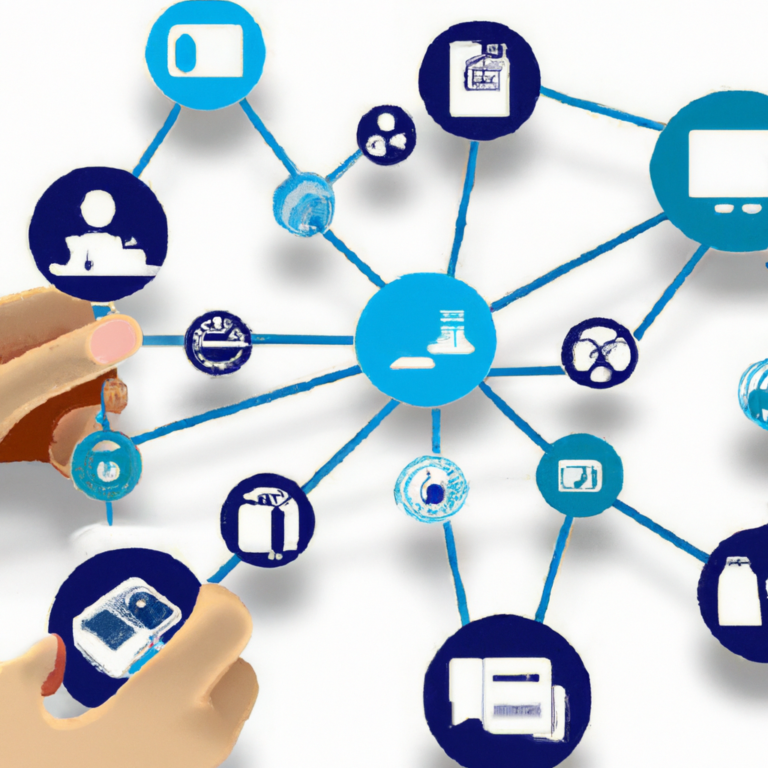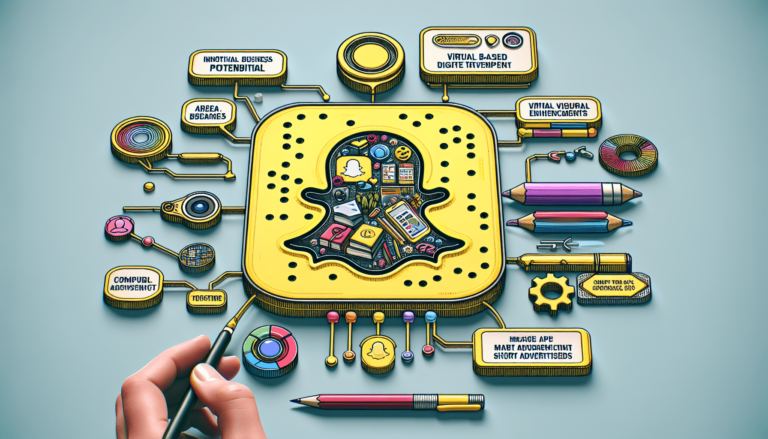What Are The Best Times To Post On Social Media?
Have you ever wondered when is the perfect time to post on social media to maximize your reach and engagement? In a world filled with endless content and constant scrolling, timing can make all the difference. Whether you’re a small business owner wanting to increase your brand’s visibility or an avid social media user looking to get more likes and comments on your posts, knowing the best times to share your content is key. In this article, we will explore the optimal posting times for various social media platforms, giving you the inside scoop to boost your online presence and make the most out of your social media strategy.
1. Key factors to consider for social media posting
When it comes to effective social media posting, there are several key factors that you should consider. By understanding and analyzing these factors, you can optimize your social media strategy and ensure that your posts reach the right audience at the right time. Let’s dive into these key factors:
1.1 Target audience
Understanding your target audience is crucial for determining the best times to post on social media. Different demographics have different online behaviors and preferences. Consider factors such as age, location, and interests to tailor your posting schedule to match the habits of your audience. By posting when your target audience is most active, you can increase the chances of higher engagement and visibility for your posts.
1.2 Social media platform
Each social media platform has its own unique characteristics and user behavior patterns. What works well on Facebook may not yield the same results on Instagram or Twitter. Take the time to familiarize yourself with the nuances of each platform and consider how they align with your target audience. This will help you determine which platforms to prioritize and how to optimize your posting times for maximum impact.
1.3 Time zone
The geographic location of your target audience plays a significant role in determining the best times to post on social media. Consider the time zone your audience is in and adjust your posting schedule accordingly. You don’t want to miss out on engaging with your audience by posting when they are asleep or not actively using social media. Take advantage of scheduling tools to ensure your posts go live at the optimal times for your audience.
1.4 Industry
Different industries have different peak engagement times on social media. It’s important to consider the nature of your business and the behaviors of your industry’s target audience when planning your posting schedule. For example, if you’re in the fashion industry, posting during lunch breaks or after work hours might be more effective as people may be more inclined to browse fashion-related content during their free time.
1.5 Engagement metrics
Regularly analyzing your social media engagement metrics can provide valuable insights into the best times to post. Look at factors such as likes, comments, shares, and click-through rates to identify patterns and trends. By monitoring these metrics, you can determine which posting times generate the highest levels of engagement for your specific audience. Use these insights to inform your posting schedule and adapt accordingly for better results.
2. Best times to post on Facebook
Facebook is one of the largest social media platforms, making it a valuable channel for businesses and individuals looking to reach a wide audience. To optimize your Facebook posting schedule, consider the following factors:
2.1 General peak times
Studies have shown that the best times to post on Facebook are typically between 1 pm and 4 pm on weekdays. This aligns with people’s lunch breaks and leisure time during the workday. Additionally, posting on weekends between 12 pm and 1 pm can also yield good engagement rates.
2.2 Industry-specific peak times
Different industries have their own peak engagement times on Facebook. For example, if you’re in the retail industry, posting on Fridays between 1 pm and 3 pm may be most effective, as people often look for weekend shopping inspiration. It’s important to research and understand the behavioral patterns of your target audience within your industry to determine the optimal posting times.
2.3 Analyzing Facebook Insights
Facebook Insights provides valuable data about your audience’s behavior and engagement with your posts. Take advantage of this tool to identify peak engagement times specific to your page and audience. Analyze metrics such as post reach, engagement rate, and click-through rate to identify patterns and trends that can inform your Facebook posting schedule.
2.4 Experimenting with different posting times
To find the best times to post on Facebook, it’s important to experiment with different posting times and monitor the results. Split-testing your posts at different times of the day and week can help you identify the optimal posting schedule for your specific audience. Be sure to track the engagement metrics and adjust your strategy accordingly based on the insights gained from these experiments.

3. Best times to post on Instagram
Instagram’s visual nature and highly engaged user base make it an ideal platform for businesses and individuals to showcase their brand and connect with their target audience. To maximize your reach and engagement on Instagram, consider the following factors:
3.1 Factors affecting Instagram posting times
The best times to post on Instagram can vary depending on several factors, including your target audience’s time zone, age group, and habits. Generally, research suggests that posting on weekdays between 11 am and 1 pm, as well as 7 pm and 9 pm, can lead to higher engagement. However, it’s crucial to analyze your specific audience’s behavior to determine the most effective posting times.
3.2 Optimal posting times for various industries
Different industries may have different optimal posting times on Instagram. For example, if you’re in the food and beverage industry, posting during lunchtime or before dinner can be effective, as people often seek food inspiration and recommendations during these times. Understanding your industry’s trends and consumer behavior can help you identify the best times to reach your target audience on Instagram.
3.3 Utilizing Instagram Insights
Instagram Insights provides valuable data about your audience’s behavior and engagement with your posts. Take advantage of this feature to gain insights into when your followers are most active and engaged. Pay attention to metrics such as reach, impressions, and engagement rate. By leveraging this data, you can optimize your posting schedule and increase the likelihood of higher engagement and visibility for your Instagram posts.
3.4 A/B testing for optimal engagement
Experimentation is key when determining the best posting times on Instagram. Conduct A/B tests by posting at different times and days of the week, and compare the engagement metrics for each post. This will help you identify the times and days that generate the highest levels of engagement from your audience. Continuously monitor and adjust your posting schedule based on the insights gained through these experiments.
4. Best times to tweet on Twitter
Twitter’s fast-paced and real-time nature makes it a popular platform for sharing news, updates, and engaging in conversations. To maximize your visibility and engagement on Twitter, consider the following factors:
4.1 Understanding Twitter user behavior
Twitter users often have distinct behavioral patterns that can influence the best times to tweet. Research suggests that the highest engagement on Twitter occurs during lunch breaks (12 pm to 1 pm) and after work hours (5 pm to 6 pm). However, it’s essential to understand your specific audience and their habits to determine the most effective posting times for your tweets.
4.2 Peak times for B2B and B2C engagement
The optimal posting times on Twitter may vary for businesses targeting other businesses (B2B) compared to those targeting individual consumers (B2C). B2B engagement tends to peak during weekdays, specifically on Mondays and Thursdays between 9 am and 4 pm. For B2C engagement, weekends and evenings may yield higher levels of activity. Consider your target audience and tailor your tweeting schedule accordingly.
4.3 Leveraging Twitter analytics
Twitter provides robust analytics tools that can help you gain insights into your audience’s behavior and engagement with your tweets. Utilize these analytics to identify peak engagement times specific to your audience. Look at metrics such as tweet impressions, retweets, and likes to determine the periods when your tweets perform best. Adapt your posting schedule based on these insights to maximize visibility and engagement.
4.4 Trying out different tweeting schedules
Experimentation is key when determining the most effective times to tweet. Try posting at different times throughout the day and night to gauge your audience’s response. Analyze the engagement metrics for each tweet, paying attention to retweets, replies, and link clicks. By testing different tweeting schedules, you can identify the optimal times to reach and engage with your target audience on Twitter.

5. Best times to post on LinkedIn
LinkedIn serves as a professional networking platform and content-sharing hub for businesses and professionals. To optimize your visibility and engagement on LinkedIn, consider the following factors:
5.1 LinkedIn audience analysis
Understanding the behavior and preferences of your LinkedIn audience is crucial when determining the best times to post. LinkedIn is primarily used during typical business hours, with greater activity on weekdays. Consider the professional nature of the platform and the habits of your target audience to determine the most effective posting times on LinkedIn.
5.2 Optimal posting times for professional content
To ensure your professional content receives maximum visibility, consider posting on LinkedIn during weekdays, specifically on Tuesdays, Wednesdays, and Thursdays between 8 am and 2 pm. These times align with the periods when professionals are most likely to be active on the platform, such as before work, during lunch breaks, and after work.
5.3 Tracking LinkedIn engagement
LinkedIn provides analytics features that can help you track and analyze your content’s performance on the platform. Pay attention to metrics such as post views, engagement rate, and click-through rate to gain insights into your audience’s behavior. Use this data to refine your posting schedule and increase the impact of your content on LinkedIn.
5.4 Adjusting posting times based on insights
Continuously analyze the performance of your LinkedIn posts to determine the most effective posting times for your audience. Experiment with different posting times and days, and monitor the engagement metrics to identify patterns and trends. By adjusting your posting schedule based on the insights gained, you can increase your visibility and engagement on LinkedIn.
6. Best times to share on Pinterest
Pinterest is a visual discovery platform that allows users to find inspiration, ideas, and products by browsing and saving pins. To maximize your visibility and engagement on Pinterest, consider the following factors:
6.1 Pinning strategy for maximum visibility
Understanding the various features and algorithms of Pinterest is essential for effective pinning. Pinterest favors fresh pins, so it’s important to consistently share new content. Pinning multiple times a day can increase your visibility and reach a wider audience. Consider sharing a mix of your own content and curated content relevant to your target audience’s interests.
6.2 Ideal posting times for different niches
The best times to post on Pinterest can vary depending on the target audience’s interests and behaviors. However, research suggests that evenings, specifically between 8 pm and 11 pm, tend to attract higher engagement on Pinterest. Additionally, weekends, particularly Saturdays, are often associated with increased Pinterest activity. Experiment with different posting times to determine what works best for your specific niche and audience.
6.3 Utilizing Pinterest Analytics
Pinterest provides analytics tools that can help you gain insights into your audience’s behavior and engagement with your pins. Leverage these analytics to identify peak engagement times specific to your niche and audience. Look at metrics such as impressions, clicks, and saves to understand which pins perform best. Use these insights to optimize your posting schedule and increase the visibility of your pins.
6.4 Conducting experiments with posting times
To determine the best times to share on Pinterest, it’s crucial to conduct experiments and track the performance of your pins. Try posting at different times throughout the day and week, and monitor the engagement metrics for each pin. Evaluate metrics such as saves, clicks, and comments to identify patterns and trends. By testing different posting times, you can refine your pinning strategy and maximize the impact of your content.
7. Best times to post on YouTube
YouTube is the largest video-sharing platform, attracting billions of active users who consume a wide range of video content. To optimize your visibility and engagement on YouTube, consider the following factors:
7.1 YouTube viewership patterns
Understanding the viewership patterns of YouTube users is essential when determining the best times to post. Research suggests that YouTube usage peaks in the evening, specifically between 7 pm and 10 pm. This aligns with viewers’ leisure time after work or school. Additionally, weekends, particularly Saturdays and Sundays, can be ideal for reaching a larger audience as users may have more free time to watch videos.
7.2 Understanding peak times for video content
Different types of video content may perform better at different times on YouTube. For example, how-to and educational videos tend to attract more views during weekdays, while entertainment and lifestyle content may be more popular during weekends. Consider your target audience’s preferences and habits when planning your posting schedule to optimize your video’s visibility and engagement.
7.3 Analyzing YouTube Analytics
YouTube provides a comprehensive analytics dashboard that can help you gain insights into your audience’s behavior and engagement with your videos. Utilize these analytics to identify peak engagement times specific to your channel and content. Look at metrics such as watch time, likes, comments, and shares to understand when your videos perform best. Leverage this data to optimize your posting schedule and increase your YouTube presence.
7.4 Testing different upload schedules
Experimentation is key when determining the best times to post on YouTube. Try uploading videos at different times and days of the week, and monitor the performance metrics for each video. Analyze metrics such as views, watch time, and engagement to identify patterns and trends. Continuously refine your upload schedule based on the insights gained through these experiments to maximize your reach and engagement on YouTube.
8. Best times to post on Snapchat
Snapchat is a popular messaging app known for its disappearing content and ephemeral nature. To effectively engage with your audience on Snapchat, consider the following factors:
8.1 Snapchat user behavior trends
To determine the best times to post on Snapchat, it’s important to understand the user behavior trends of the platform. Snapchat is commonly used during downtime, such as lunch breaks, evenings, and weekends when users have more leisure time. Consider your target audience and their habits to determine the most effective posting times and maximize your Snapchat content’s visibility.
8.2 Optimal time slots for Snapchat content
The best times to post on Snapchat can vary depending on your target audience’s preferences and routines. Research suggests that posting between 4 pm and 6 pm on weekdays can be effective, as users often check Snapchat during their commute back home or after school hours. Additionally, weekends, particularly Saturday afternoons, are often associated with increased Snapchat usage.
8.3 Using Snap Analytics for performance evaluation
Snapchat provides analytics features that can help you evaluate the performance of your content. Utilize these analytics to gain insights into your audience’s behavior and engagement with your snaps. Look at metrics such as views, screenshots, and swipe-ups to understand which snaps perform best. Leverage this data to refine your posting schedule and increase the visibility and engagement of your Snapchat content.
8.4 Adapting posting times for target audience
Continuously monitor the engagement metrics of your Snapchat content to refine your posting schedule. Experiment with different posting times and evaluate the response from your audience. Pay attention to metrics such as views, replies, and snap duration. By adapting your posting times based on the insights gained, you can increase your visibility and effectively engage with your target audience on Snapchat.
9. Best times to post on TikTok
TikTok is a rapidly growing social media platform focused on short-form video content. To optimize your visibility and engagement on TikTok, consider the following factors:
9.1 TikTok usage patterns
Understanding the usage patterns of TikTok users is crucial for determining the best times to post. TikTok usage tends to peak during leisure hours, such as evenings and weekends. Many users browse and engage with content before bedtime, so posting between 7 pm and 9 pm can often yield higher engagement rates. Consider your target audience and their habits when planning your TikTok posting schedule.
9.2 Identifying prime time for TikTok content
Different types of content may perform better at different times on TikTok. For example, funny and entertaining videos tend to do well during evenings and weekends when users are looking for entertainment. Educational or informative content may be more popular during weekday afternoons when users seek knowledge and inspiration. Identify the prime time for your specific content by monitoring engagement metrics and adjusting your posting schedule accordingly.
9.3 Monitoring TikTok analytics
TikTok provides analytics tools that can help you gain insights into your audience’s behavior and engagement with your content. Utilize these analytics to identify peak engagement times specific to your videos and target audience. Look at metrics such as video views, likes, comments, and shares to gain an understanding of when your content performs best. Incorporate these insights into your posting schedule to maximize the reach and impact of your TikTok content.
9.4 Experimenting with posting times and frequency
Experimentation is crucial when determining the best times to post on TikTok. Try posting at different times and days of the week, and monitor the performance metrics for each video. Analyze metrics such as views, likes, and shares to identify patterns and trends. Additionally, explore different posting frequencies to gauge your audience’s response. Continuously adapt your posting schedule based on the insights gained through these experiments for optimal visibility and engagement on TikTok.
10. Importance of scheduling and automation tools
Efficiency and consistency are key when it comes to social media posting. To streamline your social media strategy and improve your posting efficiency, consider the following:
10.1 Streamlining social media posting
Using scheduling and automation tools can help streamline your social media posting process. By planning and scheduling your posts in advance, you can maintain a consistent presence on multiple platforms without having to manually post each time. This allows you to save time and effort while ensuring that your content goes live at the most optimal times for your audience.
10.2 Using scheduling tools for better efficiency
Scheduling tools such as Hootsuite, Buffer, and Sprout Social allow you to plan and schedule your social media posts across various platforms in advance. With these tools, you can create a content calendar and specify the exact date and time for each post to go live. This helps you maintain a consistent posting schedule and frees up your time to focus on other important tasks.
10.3 Automation benefits and considerations
Automation tools can help you automate certain aspects of your social media posting, such as sharing blog posts or RSS feeds automatically. While automation can be beneficial in terms of saving time and effort, it’s important to strike a balance. Over-automation can result in a lack of authenticity and personalized engagement. Find the right balance between automated and manual posting to maintain a genuine connection with your audience.
10.4 Incorporating data-driven insights into scheduling
By incorporating data-driven insights into your scheduling strategy, you can maximize the impact of your social media posts. Regularly analyze your engagement metrics and adjust your posting schedule based on the patterns and trends you observe. Leverage the analytics provided by each social media platform to gain insights into your audience’s behavior and preferences. Use these insights to refine your posting times, improve engagement, and drive better results from your social media efforts.
In conclusion, determining the best times to post on social media requires a combination of understanding your target audience, analyzing platform-specific behavior, and continuously experimenting and adapting your posting schedules. By considering the factors mentioned in this article and leveraging the available analytics and automation tools, you can optimize your social media strategy and achieve higher engagement, visibility, and success on various platforms. So, get started and find the perfect posting times that will make your social media presence shine!






